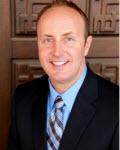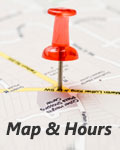Call (602) 992-1384
Sleep Apnea Surgery: When Nothing Else Works
Sleep apnea surgery is the treatment of last resort for people with severe obstructive sleep apnea (OSA) or sleep disorders who have not found relief from other sleep apnea treatments. When it comes to surgery for sleep apnea, information is key.
In OSA, the airways become obstructed and cause the person to skip breaths and gasp for air. If methods such as lifestyle changes, CPAP machines, and oral appliance therapy are not successful in treating sleep apnea, then sleep apnea physicians may recommend sleep apnea surgery.
There are many parts of the airway (the breathing tubes) that can be obstructed. For sleep apnea surgery to be successful, the sleep apnea dentist or sleep apnea physician must identify and treat all areas with obstructions. For some patients, this may require more than one surgical procedure.
Here is an overview of the different types of sleep apnea surgery:
Maxillomandibular Advancement: This is a type of orthognathic surgery that moves the jaw forward (the same principle behind sleep apnea oral appliance therapy). Also known as bimaxillary advancement (Bi-Max) or maxillomandibular osteotomy (MMO), it's often accompanied by tongue surgery.
Tracheotomy: This is a procedure in which a sleep apnea surgeon creates a new "breathing hole" in the throat. Patients breathe and speak normally during the day, but at night they breathe through the tracheotomy tube in their windpipe. It's a dramatic procedure, but one that's certain to provide relief.
Uvulopalatopharyngoplasty: Known as a UPPP or UP3, this is a procedure in which soft tissue is surgically removed from the back of the mouth and throat. The tonsils and uvula are removed, leaving the patient with a "bigger" throat that makes breathing easier. Laser-assisted UP (LAUP) uses a laser to provide similar results. Unfortunately, these procedures are not always successful.
Tongue Reduction: Reducing the size of the tongue can leave more space in the throat and airway. This may be a surgical glossectomy or somnoplasty.
Tongue Advancement: Surgery that pulls the tongue and its muscles toward the front of the mouth. Known as genioglossus and hyoid advancement (GGA), this procedure leaves more space for breathing in the back of the mouth and throat. It is most often done in conjunction with other treatment or surgery.
Tonsillectomy and adenoidectomy: This surgery removes the tonsils and adenoids, making more space in the throat for breathing. It is especially useful in treating children's sleep apnea.
Call for an appointment:
(602) 992-1384
Make an Appointment
Don't Forget to Floss!
Clean between teeth daily with floss or an interdental cleaner. Decay-causing bacteria can hide between teeth where toothbrush bristles can't reach. Flossing helps remove plaque and food particles from between teeth and under the gum line.
Visit Our Office Regularly!
Take good care of your smile. Remember to visit the dentist regularly for professional cleanings and oral exams.
Mouthwash Is Important, Too!
Brushing and flossing may not be enough. The ADA now recommends using an antimicrobial mouthwash to reduce plaque and prevent gingivitis.






